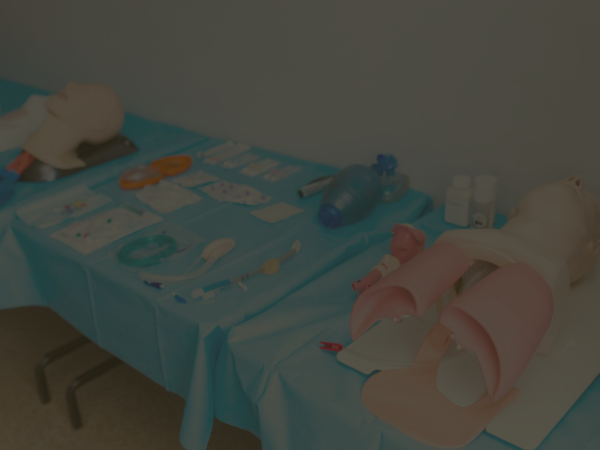Your cart is currently empty!
How to Know If an Online Course Counts as CME
Continuing medical education (CME) is critical to your ability to deliver high-quality patient care. What is the purpose of CME if not to ensure professionals stay up-to-date and continually hone their skills in an ever-changing healthcare landscape? But just because something seems like medical education doesn’t mean it qualifies as a CME for your professional license or other uses. CME accreditation for the educational provider and several other factors can come into play. Here’s how to know if the activity you’re completing should count as CME.
What Are CME Credits?
 CME stands for Continuing Medical Education. CME credits (sometimes just CME) are issued for medical courses, workshops, and other training. As a medical professional, you must earn a specified number of CME credits to renew and maintain your professional license during each licensing period.
CME stands for Continuing Medical Education. CME credits (sometimes just CME) are issued for medical courses, workshops, and other training. As a medical professional, you must earn a specified number of CME credits to renew and maintain your professional license during each licensing period.
As an example, the Medical Board of California requires 50 hours (CME credits) over two years. (MBC.CA.GOV)
But what is the purpose of CME beyond this? Several exist.
Other Reasons You Need Continuing Medical Education
Many hospital systems require you to obtain a certain number and type of CME to maintain employment. At the same time, medical specialty societies, the Joint Commission and insurance groups may require members to earn certain types and numbers of CME credits.
As an example, the professional organization American Academy of Family Physicians (AAFP.org) requires 150 credits every three years to remain a member of the organization. These must include some CME that is specifically designed for family practice physicians.
But know that many credits will overlap. So, if you need 50 over here, and 150 over there, that won’t mean 200 hours of training. What a relief!
You must keep track of how many CME credits you have and need to acquire before it’s time to renew your license, employment contract, or membership.
Given how important CME is, you need to know before you take a course, attend an event, etc., whether this activity earns a CME certificate and qualifies as continuing medical education. We’ll discuss how to know this, but first…
What Is the Purpose of CME?
According to AMA.org, the purpose of CME is to show that you regularly participate in activities that further your medical education and meet the requirements for membership in the various organizations that use this system.
There are reasons employers, licensing boards, and societies require you to complete a certain number of CME. These are critical to your professional performance.
Medicine is ever-evolving. New research can cast doubt on what you learned in school or enhance that learning to improve patient outcomes. With the average doctor working 30 to 36 years, a lot can change.
So what’s the purpose of CME? They help you:
- Stay up-to-date
- Acquire skills and knowledge in a specific area that wasn’t part of your education, so you can apply it in your practice
- Expand knowledge and skills in an area that traditional medical education only touched on
- Improve performance and patient outcomes
- Position yourself for advancement and other new opportunities as they arise
- Work more effectively with other medical professionals, especially if they take the same course. For example, your whole team could get a Pediatric Advanced Cardiac Life Support (PALS) CME certificate to strengthen your ability to work as a team to save a child during a Code Blue.
CME is counted in hours, with each hour being a CME credit. That gives or takes a little for self-paced learning, such as might be the case if obtaining an online CME certificate through an organization with CME accreditation.
CME Vs. CE
CE is Continuing Education. They’re sometimes also called CEUs, Continuing Education Units.
All licensed professionals, from teachers to HVAC professionals, must complete CE to keep their licenses.
CME is specifically for medical professionals. Different professionals in the medical industry often require a certain number of CE credits, of which X number of credits must be CME. These requirements vary by state or other licensing body if you’re outside the US.
With that said, the term CME is broad. It doesn’t just mean patient care education. It can include other skills within a medical setting, like:
- Medical Facility and Practice Management
- Teaching Methodology for Physicians who Teach other medical professional
- Coding
- Developing a Bloodborne Pathogens Management Plan
- Advanced Cardiac Life Support (ACLS)
What Professionals Need CME Credits
The following are universally required to earn CME hours:
- Physicians
- Pharmacists
- Nurses
- Nurse Practitioner
- Doctor of Nursing
- EMS
- Physician Assistant
Other medical industry professionals may be required to get a certain number of medical education credits. For example, according to AAMA.org, a Certified Medical Assistant who takes a CPR course within a recertification period earns four clinical AAMA recertification points. And yes, you can now get CPR and First Aid certification online!
Other non-medical professionals can benefit from a CME certificate and may count a CE needed for their professional licenses.
For example, psychologists, dentists, daycare teachers, LCSWs, and other professionals who interact with people could benefit from taking a bloodborne pathogens course or learning CPR.
How Do I Know If a Course Counts as CME
Not all healthcare courses will count as CME. They need to meet some criteria.
CME Accreditation
What is CME Accreditation? CME accreditation means that nationally and/or internationally recognized bodies have reviewed the educational institutions’ courses. The reviewing body has verified that they meet standards for continuing medical education. As a result, they can count as CME.
So getting a medical certificate in ACLS from one training program may not be the same as getting it from another. Choose an organization that has CME accreditation from a reputable group and is transparent about its CME accreditation.
As an example, the online CME certificate and free medical education company Save a Life by NHCPS has internationally recognized CME accreditation from:
- Accreditation Council for Continuing Medical Education (ACCME.org)
- The Accreditation Council for Pharmacy Education (ACPE.org)
- The American Nurses Credentialing Center (ANCC) (CGFNS.org)
The Postgraduate Institute for Medicine (PIMED.org) designates the number of CME credits professionals can receive from Save a Life’s online medical education courses. You can find out how much CME you could earn before taking the course.
Specific Organizational Requirements
Beyond CME accreditation, the group for which you need to complete CME may specify that you can only have so many of one type of CME. Or you can only earn CME from recertification so many times for the same course.
In these instances, it’s important to read the requirements carefully to make sure you understand them.
Do Save a Life Courses Have CME Accreditation?
Yes. They do.
Several reputable specialty organizations tasked with verifying the quality of medical education have accredited Save a Life courses. This means when you pass a test to get a course certificate, you can submit it towards your CME requirements.
Types of CME Credits
What’s the difference between Category 1 and Category 2 credits? Here’s how to decide if a course will give you the right kind of credit.
AMA Category 1 Credits /AMA PRA Category 1 Credits
The American Medical Association considers a Category 1 Credit one that shows you participated in continuing medical education required by the various licensing organizations (e.g., The American College of Obstetricians) and by your state licensing board.
Basic Life Support (BLS), Advanced Cardiac Life Support (ACLS), and Pediatric Advanced Cardiac Life Support (PALS) all qualify for Category 1 CME credits. For example, you get up to 4 credits for BLS and up to 8 for ACLS or PALS.
These are advanced medical education courses, so they are Category 1.
AMA Category 2 Credits / AMA PRA Category 1 Credits
Category 2 Credits are earned for medical education that isn’t as advanced, so it doesn’t meet the standards of Category 1. You can think of Category 2 as medical education that anyone could learn to do. After you have enough Category 1 credits, Category 2 can make up the difference.
CPR, AED, and First Aid Certification is an example of a course that is Category 2. You can earn up to 6 AMA Category 2 credits from this online course.
CPR and first aid are, of course, essential for medical professionals. But you don’t have to be a doctor, paramedic, etc., to use these skills. So they will not qualify for Category 1 credits.
Bloodborne Pathogens (BBP) Certification is another example of a Category 2. Everyone can benefit from learning proper management of potentially infectious materials (PIM).
Prescribed Credits
Some CME is designed explicitly for physicians based on their specialties. These credits directly apply to day-to-day patient care in that specialty.
For example, an AAFP credit is a credit specifically for Family Medicine Doctors. However, according to AAFP.org, life support courses like ACLS, BLS, and PALS count toward these prescribed credits.
How to Earn CME Credits
You have several sources from which to acquire CME.
First, many employers will host opportunities to earn CME. It may even be paid on the clock. Additionally, professional licensing organizations often have a portal and offer training through their websites or in person. Their websites may link to additional resources.
Some other ways include medically-themed:
- Classes
- Lectures
- Webinars
- Seminars
- Conferences
- Workshops
- Online courses
- Conferences
- Q&A
- Getting CPR certified
- Completing trade journal tests
- In-services
Continuing Medical Education Credits for Recertification
You can take a course more than once and earn CME for it. Let’s say you already obtained your Basic Life Support (BLS) certificate, which earned you up to 4 AMA Category 1 CME credits.
When it’s time to renew your BLS certificate, you can take the recertification course and test again to earn up to 2 more CME credits. Since you’ve already taken the course, you’ll likely complete it much faster. That’s reflected in the lower number of credits.
But if you have several recertifications to take, these can really add up.
Why retake the same course? You’re not. Each course should be up-to-date with the latest ILCOR guidance and standards. So getting recertified means you’re staying current with best practices.
What Doesn’t Count as a CME?
 Generally speaking, it’s possible for education to be valuable to you professionally but not count as CME. You wouldn’t be the first to try to earn CME credits in clever ways.
Generally speaking, it’s possible for education to be valuable to you professionally but not count as CME. You wouldn’t be the first to try to earn CME credits in clever ways.
For reference, the American Association of Medical Personnel (AAMP.net) lists these as examples of activities that don’t qualify for CME.
- Volunteer work
- Meetings with drug reps
- Business classes to improve how you run your practice
- Your regular work hours or doing overtime. Yes, people try to submit this!
- Reading journal articles without graded quizzes
Some other reasons they mention that CME could be denied include:
- Not completed in the year of renewal (check your requirements)
- No specific date on the CME certificate
- No CME accreditation
- Duplicate submission
Note: This is not an all-inclusive list.
Despite your best efforts, it’s possible that some of the activities you thought were CME may not be, so it’s important to keep track of how many are on record with the licensing board, society, or employer.
How Do I Keep Track of CME Earned?
Organizations requiring CME will typically have an online portal or designated email/fax where you can submit CME documentation to earn credits. On their website, you may also be able to view how many credits you have. And you can see if you have credits pending review.
You should always check to see if your CME is already on your account. That’s because many organizations with CME accreditation report Category 1 Credits within 90 days of completing the course of obtaining the CME certificate.
What Can I Do If I Don’t Have Enough CME?
If you’re running out of time, you may scramble to find live events or activities that count. But fortunately, you can get Category 1 CME online. So, if you only need 4, 8, or 16 CME, you could earn those CME online by getting online certifications that count as Category 1 credits.
Where Can I Get CME Credits Online?
One of the fastest ways to earn CME is by completing IlCOR-aligned and up-to-date online courses for a CME certificate. You can get these certifications 100% online through Save a Life.
- ACLS Certification & Recertification
- PALS Certification & Recertification
- BLS Certification & Recertification
- CPR, AED & First Aid Certification
- Bloodborne Pathogens Certification
Review a course’s training videos, resources, practice tests, mega codes, and algorithms all for free. Once you’ve completed the course, pass the course’s test and pay a small fee to become certified.
You can bundle courses, pay for lifetime recertification, and get group discounts to save money on CME you know you’ll need every couple of years to meet your professional requirements.
Are you ready to knock out your CME requirements through engaging and informative online courses? Start learning and earning CME today. Share your experience in the comment section below or with the online community.









Leave a Reply